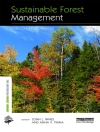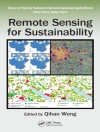This edited collection examines the various influences, relationships, and developments beer has had from distinctly spatial perspectives. The chapters explore the functions of beer and brewing from unique and sometimes overlapping historical, economic, cultural, environmental and physical viewpoints.
Topics from authors – both geographers and non-geographers alike – have examined the influence of beer throughout history, the migration of beer on local to global scales, the dichotomous nature of global production and craft brewing, the neolocalism of craft beers, and the influence local geography has had on beer’s most essential ingredients: water, starch (malt), hops, and yeast.
At the core of each chapter remains the integration of spatial perspectives to effectively map the identity, changes, challenges, patterns and locales of the geographies of beer.
Innehållsförteckning
Geographies of Beer.- Section 1: Regions.- The Geography of Beer in Europe from 1000 B.C. to A.D. 1000.- The Spatial Diffusion of Beer From Its Sumerian Origins to Today.- Mapping Unites States Breweries 1612 to 2011.- Local to National and Back Again: Beer, Wisconsin & Scale.- The World’s Beer: The Historical Geography of Brewing in Mexico.- Geographic Appellations of Beer.- Section 2: Environment.- The Global Hop: An Agricultural Overview of the Brewer’s Gold.- Sweetwater, Mountain Springs, and Great Lakes: A hydro-geography of beer brands.- A Taste of Place: Environmental Geographies of the Classic Beer Styles.- Sustainability Trends in the Regional Craft Beer Industry. Section 3: Societies.- The Origins and Diaspora of the India Pale Ale.- The Ubiquity of Good Taste: A Spatial Analysis of the Craft Brewing Industry in the United States.- Too big to ale? Globalization and consolidation in the beer industry.- Microbreweries, Place, and Identity in the United States.- Neolocalism and the Branding and Marketing of Place by Canadian Microbreweries.- Offline Brews and Online Views: Exploring the Geography of Beer Tweets.
Om författaren
Mark Patterson is a Professor of Geography and coordinator of the Environmental Analysis and Sustainability program at Kennesaw State University. He earned his Ph.D. in Geography from the University of Arizona. Mark has (co)authored publications on geospatial technology applications for environmental management. Mark’s favorite beer style is a chocolate stout.
Nancy Hoalst Pullen is an Associate Professor of Geography and the Geographic Information Science Director at Kennesaw State University. She obtained a Ph.D. in Geography from the University of Colorado at Boulder. She is the Associate Editor of the Journal of Applied Geography, and has co-edited (with Mark W. Patterson) a volume entitled Geotechnologies in Environmental Management (2010). Nancy has authored and co-authored several publications on such topics as [sub]urban forest dynamics, environmental perceptions of Latin Americans, and forestry management (Chile). Nancy’s favorite beer is a Bavarian style hefe weissbier, served at room temperature.












